-
 Bitcoin
Bitcoin $79,309.9469
5.46% -
 Ethereum
Ethereum $1,575.4794
6.76% -
 Tether USDt
Tether USDt $0.9996
0.03% -
 XRP
XRP $1.8684
10.75% -
 BNB
BNB $559.1592
4.86% -
 USDC
USDC $0.9998
-0.02% -
 Solana
Solana $108.9193
9.75% -
 Dogecoin
Dogecoin $0.1493
10.49% -
 TRON
TRON $0.2326
3.85% -
 Cardano
Cardano $0.5862
10.61% -
 UNUS SED LEO
UNUS SED LEO $8.9694
0.72% -
 Toncoin
Toncoin $3.1094
5.06% -
 Chainlink
Chainlink $11.6110
10.41% -
 Avalanche
Avalanche $17.1493
12.22% -
 Stellar
Stellar $0.2310
12.64% -
 Shiba Inu
Shiba Inu $0.0...01132
6.17% -
 Hedera
Hedera $0.1578
22.08% -
 Sui
Sui $2.0151
12.13% -
 MANTRA
MANTRA $6.2854
6.64% -
 Polkadot
Polkadot $3.5990
7.58% -
 Bitcoin Cash
Bitcoin Cash $276.8413
7.33% -
 Litecoin
Litecoin $71.4393
9.84% -
 Dai
Dai $1.0000
0.01% -
 Ethena USDe
Ethena USDe $0.9990
0.07% -
 Bitget Token
Bitget Token $4.1736
10.38% -
 Pi
Pi $0.5864
5.86% -
 Hyperliquid
Hyperliquid $11.9119
22.51% -
 Monero
Monero $207.4588
8.04% -
 Uniswap
Uniswap $5.1898
7.27% -
 OKB
OKB $52.1447
2.68%
What is the Lightning Network? How does it solve Bitcoin's congestion problem?
The Lightning Network enhances Bitcoin's scalability by enabling off-chain transactions, reducing blockchain congestion and transaction fees.
Apr 06, 2025 at 08:15 pm
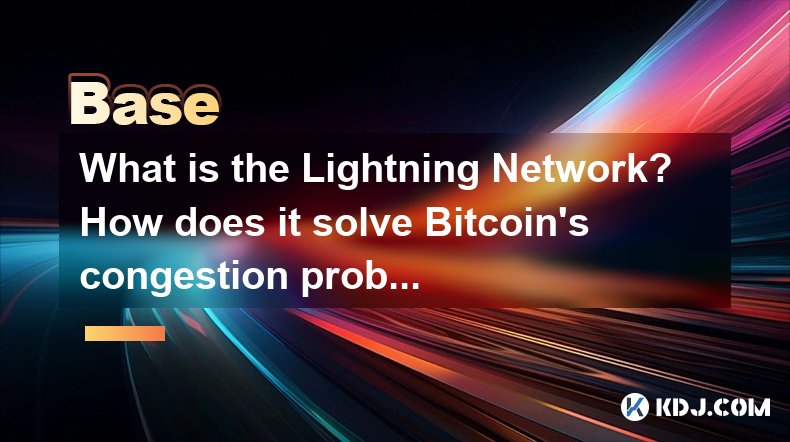
The Lightning Network is a second-layer scaling solution designed to enhance the scalability and efficiency of Bitcoin transactions. It operates on top of the Bitcoin blockchain, allowing users to create payment channels between each other to conduct multiple transactions off-chain. This significantly reduces the load on the main blockchain, thereby addressing Bitcoin's congestion problem.
What is the Lightning Network?
The Lightning Network is a decentralized network of payment channels that enables instant, low-cost transactions between participating nodes. It was proposed in 2015 by Joseph Poon and Thaddeus Dryja as a solution to Bitcoin's scalability issues. The core idea behind the Lightning Network is to move the majority of transactions off the main blockchain, thereby reducing the number of transactions that need to be processed and recorded on the blockchain.
How Does the Lightning Network Work?
The Lightning Network functions by allowing users to open payment channels with each other. Here's a detailed look at how it works:
Opening a Payment Channel: To start using the Lightning Network, two parties must first open a payment channel. This involves creating a multi-signature wallet that requires both parties to sign off on any transactions. The initial transaction to open the channel is recorded on the Bitcoin blockchain, locking a certain amount of Bitcoin in the channel.
Conducting Transactions: Once the channel is open, the parties can conduct multiple transactions off-chain. These transactions are not recorded on the blockchain but are instead managed within the channel. Each transaction updates the balance of the channel, and these updates can be done almost instantly and at a very low cost.
Closing a Payment Channel: When the parties are done transacting, they can close the channel. The final state of the channel is then recorded on the Bitcoin blockchain, and the Bitcoin is distributed according to the final balance.
How Does the Lightning Network Solve Bitcoin's Congestion Problem?
Bitcoin's congestion problem arises from the limited block size and the high demand for transaction processing. The Lightning Network addresses this issue in several ways:
Reduced Load on the Blockchain: By moving transactions off-chain, the Lightning Network significantly reduces the number of transactions that need to be processed and recorded on the Bitcoin blockchain. This alleviates congestion and allows the blockchain to handle a higher volume of transactions more efficiently.
Faster Transaction Times: Transactions on the Lightning Network are processed almost instantly, as they do not need to wait for block confirmations. This is a stark contrast to on-chain transactions, which can take anywhere from 10 minutes to several hours to be confirmed.
Lower Transaction Fees: Since transactions on the Lightning Network do not compete for space on the blockchain, the fees associated with these transactions are significantly lower. This makes microtransactions and small-value transactions more feasible, further reducing the overall load on the blockchain.
Benefits of the Lightning Network
The Lightning Network offers several benefits that contribute to its effectiveness in solving Bitcoin's congestion problem:
Scalability: The Lightning Network can handle a much higher volume of transactions per second than the Bitcoin blockchain alone. This scalability is crucial for the widespread adoption of Bitcoin as a payment method.
Privacy: Transactions conducted on the Lightning Network are not publicly recorded on the blockchain, offering a higher level of privacy for users. This is particularly beneficial for those who wish to keep their transaction history private.
Interoperability: The Lightning Network is not limited to Bitcoin; it can be implemented on other blockchains that support smart contracts. This interoperability allows for cross-chain transactions, further enhancing its utility.
Challenges and Considerations
While the Lightning Network offers significant advantages, it also comes with its own set of challenges and considerations:
Complexity: Setting up and managing payment channels can be complex for the average user. This complexity may deter some users from adopting the Lightning Network.
Liquidity: For the Lightning Network to function effectively, there must be sufficient liquidity in the payment channels. If a user does not have enough funds in their channel to complete a transaction, they may need to close and reopen the channel, which can be cumbersome.
Security: While the Lightning Network is designed to be secure, there are potential risks associated with channel management and the possibility of fraudulent behavior. Users must be vigilant and follow best practices to mitigate these risks.
How to Use the Lightning Network
Using the Lightning Network involves several steps, which can vary depending on the specific wallet or service you are using. Here is a general guide on how to get started:
Choose a Lightning Wallet: There are several wallets that support the Lightning Network, such as Zap, Wallet of Satoshi, and BlueWallet. Choose a wallet that suits your needs and download it to your device.
Fund Your Wallet: Once you have chosen a wallet, you will need to fund it with Bitcoin. This involves sending Bitcoin from your existing wallet to the new Lightning wallet address.
Open a Payment Channel: To start using the Lightning Network, you need to open a payment channel with another user or a service provider. This can usually be done through the wallet interface by selecting the option to open a channel and specifying the amount of Bitcoin you want to lock in the channel.
Conduct Transactions: With the channel open, you can now send and receive payments instantly and at a low cost. Most wallets will have a simple interface for sending and receiving Lightning payments.
Close the Payment Channel: When you are done transacting, you can close the channel. This involves broadcasting the final state of the channel to the Bitcoin blockchain, and the Bitcoin will be distributed according to the final balance.
Frequently Asked Questions
Q: Can I use the Lightning Network with other cryptocurrencies besides Bitcoin?
A: While the Lightning Network was originally designed for Bitcoin, it can be implemented on other blockchains that support smart contracts. However, the most widely used and developed implementation is currently on the Bitcoin network.
Q: Is the Lightning Network secure?
A: The Lightning Network is designed to be secure, but like any technology, it comes with potential risks. Users must follow best practices, such as regularly updating their software and being cautious with channel management, to minimize these risks.
Q: How does the Lightning Network affect Bitcoin's decentralization?
A: The Lightning Network can potentially enhance Bitcoin's decentralization by allowing more users to participate in the network without overloading the blockchain. However, it also introduces new nodes and channels that need to be managed, which can add complexity to the overall system.
Q: Can I use the Lightning Network for large transactions?
A: While the Lightning Network is ideal for small and frequent transactions, it can also be used for larger transactions. However, for very large transactions, users may prefer to use the main Bitcoin blockchain for added security and finality.
Disclaimer:info@kdj.com
The information provided is not trading advice. kdj.com does not assume any responsibility for any investments made based on the information provided in this article. Cryptocurrencies are highly volatile and it is highly recommended that you invest with caution after thorough research!
If you believe that the content used on this website infringes your copyright, please contact us immediately (info@kdj.com) and we will delete it promptly.
- Wyoming Is Launching a Stablecoin Later This Year, Which Could Be the First Issued by a Public Entity in the U.S.
- 2025-04-08 14:20:12
- BNB vs SOL: Which Crypto to Invest in?
- 2025-04-08 14:20:12
- Big News for XRP as Ripple CEO Meets with Trump and Sparks Intrigue Within the Cryptocurrency Community Hinting at Promising Developments.
- 2025-04-08 14:15:12
- Interactive Brokers Expands Cryptocurrency Portfolio by Adding Four Major Altcoins
- 2025-04-08 14:15:12
- US stocks fall on Wednesday, dragged down by a sharp sell-off in tech stocks, as renewed trade war concerns rattle investors
- 2025-04-08 14:10:12
- Just 24 Hours After Adding Its Name to the Roster of Companies Pursuing a Bitcoin (BTC) Treasury Strategy, GameStop (GME) — Led by Its CEO Ryan Cohen — Is Also Adding Its Name to Those Firms Issuing Convertible Debt to Raise Funds for BTC Acquisition
- 2025-04-08 14:10:12
Related knowledge
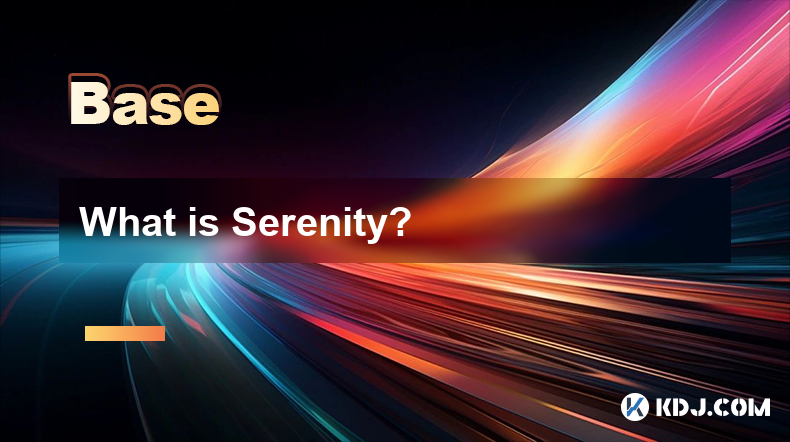
What is Serenity?
Apr 08,2025 at 02:00pm
Serenity, also known as Ethereum 2.0, represents a major upgrade to the Ethereum blockchain. This ambitious project aims to address the scalability, security, and sustainability issues faced by the current Ethereum network. Serenity is not a single update but a series of upgrades that will transform Ethereum into a more efficient and robust platform. Th...

What is Finality Gadget?
Apr 08,2025 at 04:14am
The Finality Gadget is a crucial component in the architecture of certain blockchain networks, particularly those that utilize a hybrid consensus mechanism. It plays a pivotal role in ensuring the finality of transactions, which means that once a transaction is confirmed, it cannot be altered or reversed. This article delves into the intricacies of the ...
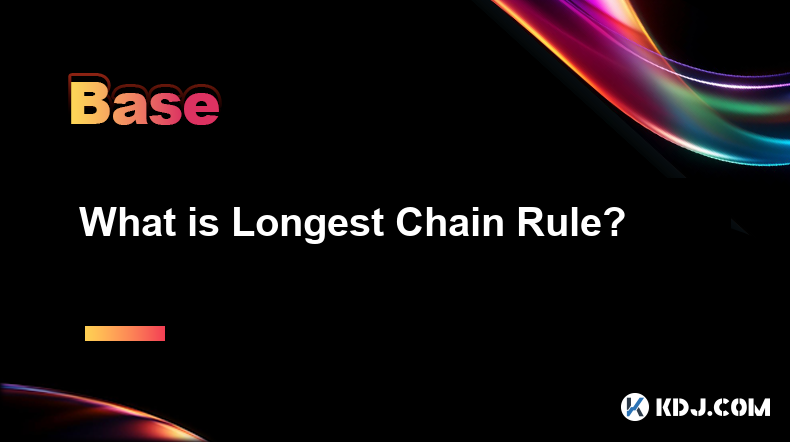
What is Longest Chain Rule?
Apr 08,2025 at 07:50am
The Longest Chain Rule is a fundamental concept in blockchain technology, particularly in the context of cryptocurrencies like Bitcoin. This rule is crucial for maintaining the integrity and security of the blockchain network. In essence, the Longest Chain Rule dictates that the valid blockchain is the one with the most cumulative proof-of-work, which i...

What is Orphan Block?
Apr 08,2025 at 05:00am
What is an Orphan Block?In the world of cryptocurrencies, particularly in blockchain technology, the term orphan block is frequently encountered. An orphan block is a block that has been mined and added to the blockchain but is later discarded or replaced by another block. This phenomenon occurs due to the decentralized nature of blockchain networks, wh...
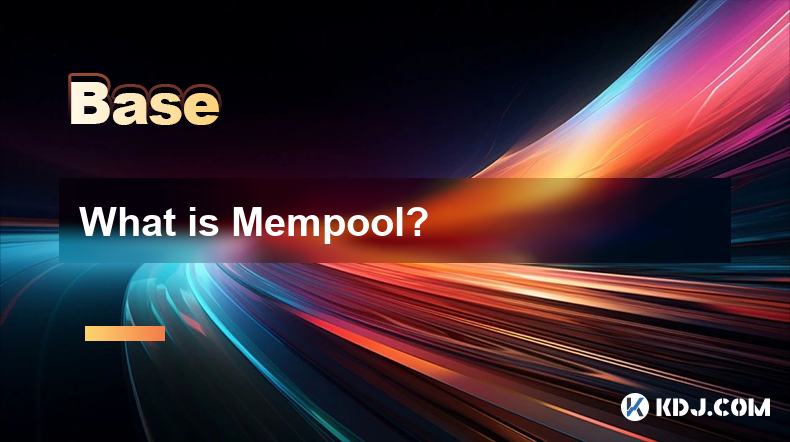
What is Mempool?
Apr 08,2025 at 12:36pm
What is Mempool?In the world of cryptocurrencies, particularly Bitcoin, the term Mempool is frequently mentioned. But what exactly is a Mempool, and why is it important? A Mempool, short for memory pool, is a critical component of the blockchain network that serves as a temporary storage area for unconfirmed transactions. When a user initiates a transac...
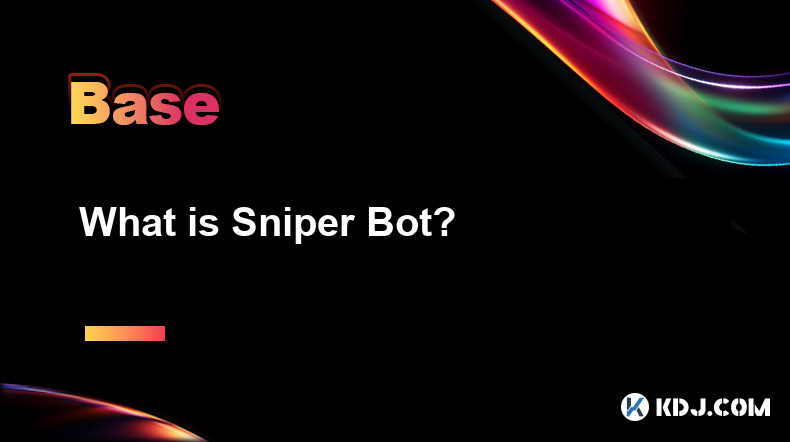
What is Sniper Bot?
Apr 07,2025 at 10:43pm
A Sniper Bot is a type of automated trading software used within the cryptocurrency market to execute trades at optimal times, often milliseconds before other traders. These bots are designed to take advantage of new token listings, price fluctuations, and other market opportunities to buy or sell assets quickly and efficiently. The primary goal of a Sn...

What is Serenity?
Apr 08,2025 at 02:00pm
Serenity, also known as Ethereum 2.0, represents a major upgrade to the Ethereum blockchain. This ambitious project aims to address the scalability, security, and sustainability issues faced by the current Ethereum network. Serenity is not a single update but a series of upgrades that will transform Ethereum into a more efficient and robust platform. Th...

What is Finality Gadget?
Apr 08,2025 at 04:14am
The Finality Gadget is a crucial component in the architecture of certain blockchain networks, particularly those that utilize a hybrid consensus mechanism. It plays a pivotal role in ensuring the finality of transactions, which means that once a transaction is confirmed, it cannot be altered or reversed. This article delves into the intricacies of the ...

What is Longest Chain Rule?
Apr 08,2025 at 07:50am
The Longest Chain Rule is a fundamental concept in blockchain technology, particularly in the context of cryptocurrencies like Bitcoin. This rule is crucial for maintaining the integrity and security of the blockchain network. In essence, the Longest Chain Rule dictates that the valid blockchain is the one with the most cumulative proof-of-work, which i...

What is Orphan Block?
Apr 08,2025 at 05:00am
What is an Orphan Block?In the world of cryptocurrencies, particularly in blockchain technology, the term orphan block is frequently encountered. An orphan block is a block that has been mined and added to the blockchain but is later discarded or replaced by another block. This phenomenon occurs due to the decentralized nature of blockchain networks, wh...

What is Mempool?
Apr 08,2025 at 12:36pm
What is Mempool?In the world of cryptocurrencies, particularly Bitcoin, the term Mempool is frequently mentioned. But what exactly is a Mempool, and why is it important? A Mempool, short for memory pool, is a critical component of the blockchain network that serves as a temporary storage area for unconfirmed transactions. When a user initiates a transac...

What is Sniper Bot?
Apr 07,2025 at 10:43pm
A Sniper Bot is a type of automated trading software used within the cryptocurrency market to execute trades at optimal times, often milliseconds before other traders. These bots are designed to take advantage of new token listings, price fluctuations, and other market opportunities to buy or sell assets quickly and efficiently. The primary goal of a Sn...
See all articles






















































































